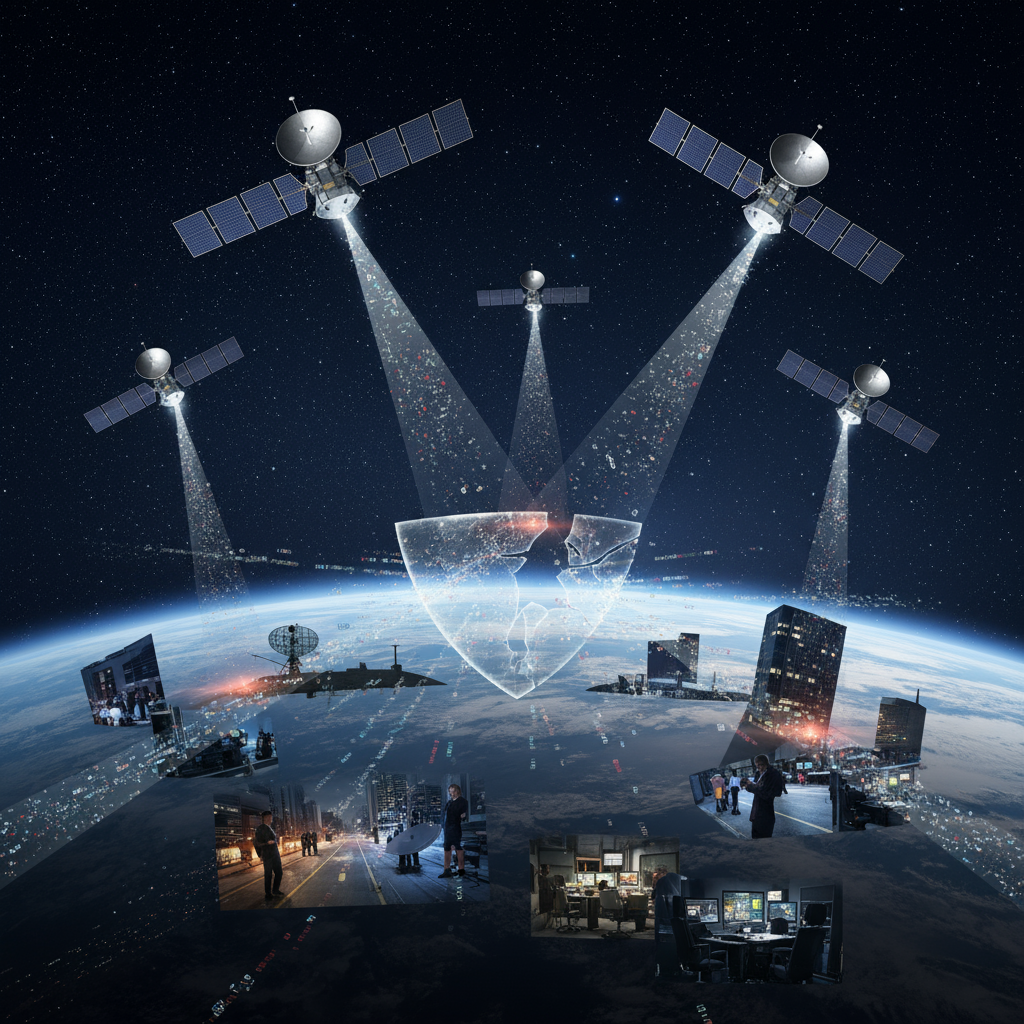The Sky’s the Limit… for Leaks: How Satellites Are Spilling Our Secrets

For decades, satellites have represented the pinnacle of technological advancement, silently orbiting above us, facilitating global communication, navigation, and national security. They are the invisible sinews connecting our modern world. But what if these silent guardians were, in fact, unwitting conduits for the world’s most sensitive information? What if the very technology designed to keep us connected is also making us incredibly vulnerable? Recent revelations suggest a disconcerting truth: satellites are leaking calls, texts, military maneuvers, and corporate data, creating a vast, open-air repository of secrets for anyone with the right equipment to intercept.
This isn’t the stuff of Hollywood thrillers; it’s a stark reality emerging from the ever-increasing complexity of our satellite-dependent infrastructure. The implications are profound, touching upon national security, corporate espionage, and individual privacy. It’s an issue that demands our immediate attention and a deeper understanding of the vulnerabilities inherent in our interconnected world.
The “Open-Air” Nature of Satellite Communication

Unlike terrestrial networks that often route data through fiber optic cables or secure land-based infrastructure, satellite communication inherently involves broadcasting signals through the vast expanse of space. While these signals are intended for specific receivers, the very nature of their transmission means they are, in essence, “in the air.” Any individual or entity within the geographical footprint of a satellite’s broadcast can, with relatively inexpensive and accessible equipment, intercept these transmissions.
Think of it as shouting a message across a crowded stadium. While you’re aiming for a particular person, anyone within earshot can potentially hear what you’re saying. In the context of satellites, the “stadium” is vast, encompassing entire continents, and the “shouting” involves powerful radio signals carrying everything from your private phone calls to classified military dispatches.
The problem is exacerbated by the sheer volume of data traversing these networks. From remote oil rig communications and maritime vessel systems to critical infrastructure telemetry and even military drone feeds, a myriad of sensitive information is constantly being beamed up and down. Many of these systems, particularly older ones, weren’t designed with robust, end-to-end encryption or advanced security protocols in mind, leaving gaping holes for determined interceptors.
From Casual Sniffing to Targeted Espionage
The range of information being leaked is alarmingly broad. On the more mundane end, we’re talking about unencrypted phone calls and text messages. Imagine thinking you’re having a private conversation, only for it to be picked up by a hobbyist with an antenna and receiver. While this might seem like a minor privacy infringement, the accumulation of such data can paint a detailed picture of individuals’ lives, habits, and associations.
The stakes escalate significantly when considering corporate and industrial data. Companies operating in remote areas often rely on satellite links for their day-to-day operations. This can include sensitive information about proprietary processes, financial transactions, logistics, and even the internal communications of executives. A competitor or a malicious actor could gain an unparalleled advantage by simply listening in on these unencrypted channels.
Perhaps the most disturbing aspect concerns military and governmental communications. As the source suggests, even military data is susceptible. This could range from logistical movements and supply chain information to potentially compromising intelligence. While classified military communications are generally more secure, the sheer volume and diversity of military satellite usage means that even seemingly innocuous unencrypted transmissions could offer valuable insights to an adversary, allowing them to piece together a larger operational picture.
The Challenge of Securing the Stratosphere
Addressing this pervasive vulnerability presents a multifaceted challenge. Firstly, there’s the issue of legacy systems. Many older satellite communication networks were deployed before the current threat landscape fully materialized, and upgrading them en masse is a monumental, if not impossible, task due to cost, logistics, and operational disruption. These older systems often lack the computational power or architectural design necessary for modern, strong encryption.
- Stronger encryption protocols: The most immediate and critical step is to enforce robust end-to-end encryption for all satellite communications, treating every signal as potentially exposed.
- Secure hardware and software: Developing and deploying satellite transponders and ground station equipment with built-in security features and tamper-proof designs.
- Regular security audits and updates: Continuous monitoring and patching of vulnerabilities in satellite systems, much like is done for terrestrial networks.
- Awareness and training: Educating users, from individual consumers to military personnel, about the risks of unencrypted communication over satellite links and promoting best practices.
Moreover, the sheer number of satellites in orbit is growing exponentially, with megaconstellations like Starlink adding thousands more to the mix. While these constellations promise more accessible internet, they also expand the potential attack surface. Each new satellite is a potential conduit for data, and ensuring the security of such a vast and dynamic network requires unprecedented levels of coordination and technological innovation.
A Call for Action in the New Space Race
The revelation that satellites are leaking the world’s secrets serves as a critical wake-up call. We are in a new space race, not just to launch more objects into orbit, but to secure the digital highways they create. The implications of these leaks are no longer abstract; they are directly impacting national security, economic stability, and individual privacy.
Governments, corporations, and technology developers must collaborate to implement comprehensive security measures, upgrade legacy systems, and design future satellite networks with security as a foundational principle, not an afterthought. The vast potential of satellite technology should not come at the cost of our collective security. It’s time to ensure that the silent guardians above us are truly secure, protecting our secrets rather than inadvertently exposing them to the world.

